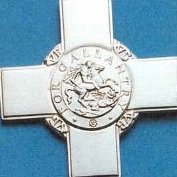Passenger Fixes Faulty Airliner
-
Recently Browsing 0 members
- No registered users viewing this page.
-
Topics
-
-
Popular Contributors
-
-
Latest posts...
-
4
Report Thailand Slashes Cannabis Shops Amid New Medical Regulations
perhaps a better solution would be to have current health clinics and hospitals where doctors are already in attendance be authorized to prescribe, this of course would negate the need for cannabis shops entirely which seems inevitable anyway -
10
Report Anutin: Xi Jinping Opposed Casino Plan, Now Thai Tourism Pays the Price
Annoying the Chinese always ends this way. What surprises me is that someone had enough clout to destroy the tourism based economy on a whim to get some casino opened. That is odd isn't it? Who? -
4
Report Thailand Slashes Cannabis Shops Amid New Medical Regulations
and in another article posted today it says "18,000 shops will all close".......never experienced any other country with such contradictory information or rule changes, new rules...EVER. Thai law could be almost classed a torture method. -
4
Report Thailand Slashes Cannabis Shops Amid New Medical Regulations
Wow. Gonna have to pay an extra $10 somewhere -
280
Economy Trump Dishes Out 36% Tariffs in Shock Move Against Thailand
What are the Thai tariffs on imports? -
41
EU review indicates Israel breached human rights in Gaza
Most Brits believe the government should not approve the supply of spare parts for Israeli F-35 jets because of the Gaza war. Polling shows 55% are against supplies for the F-35, according to Save the Children, Christian Aid, Oxfam and Medical Aid for Palestinians, who commissioned the survey. The YouGov study reveals 69% of Labour voters as well as 64% of Liberal Democrat voters say the UK should stop supplies. Most Brits want UK supplies for Israeli warplanes to be halted over Gaza war
-
-
Popular in The Pub











.thumb.jpg.3ee24d9400fb02605ea21bc13b1bf901.jpg)

Recommended Posts
Create an account or sign in to comment
You need to be a member in order to leave a comment
Create an account
Sign up for a new account in our community. It's easy!
Register a new accountSign in
Already have an account? Sign in here.
Sign In Now